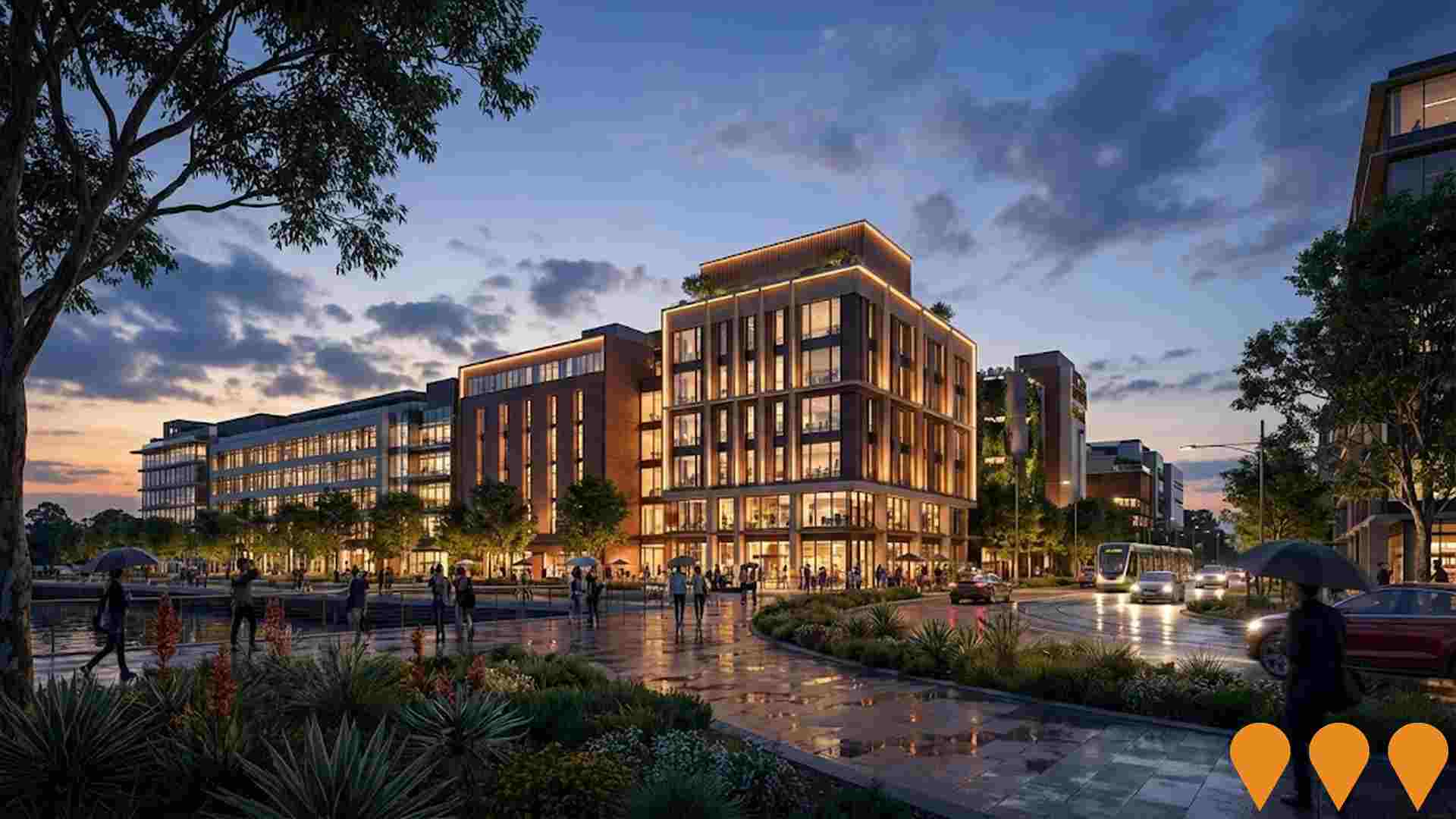Chart Color Schemes
est. as @ -- *
ABS ERP | -- people | --
2021 Census | -- people
Sales Activity
Curious about local property values? Filter the chart to assess the volume and appreciation (including resales) trends and regional comparisons, or scroll to the map below view this information at an individual property level.
Find a Recent Sale
Sales Detail
Population
Kensington has seen population growth performance typically on par with national averages when looking at short and medium term trends
Kensington Vic's population is 11,877 as of Aug 2025. This shows a growth of 1,132 people since the 2021 Census, which reported a population of 10,745. The increase is inferred from ABS estimated resident population of 11,699 in June 2024 and an additional 100 validated new addresses post-Census. This results in a density ratio of 5,524 persons per square kilometer, placing Kensington among the top 10% of national locations assessed by AreaSearch. Kensington's 10.5% growth since the 2021 census exceeds both national (8.6%) and state averages, indicating strong population growth in the region. Overseas migration contributed approximately 73.5% of overall population gains recently.
AreaSearch uses ABS/Geoscience Australia projections for each SA2 area released in 2024 with a base year of 2022. For areas not covered by this data, AreaSearch employs VIC State Government's Regional/LGA projections from 2023 with adjustments made using weighted aggregation methods. Growth rates by age group are applied across all areas for years 2032 to 2041. Future trends project above median population growth, with Kensington expected to expand by 2,389 persons to 2041 based on latest numbers, reflecting an increase of 18.6% over the 17-year period.
Frequently Asked Questions - Population
Development
AreaSearch assessment of residential development activity positions Kensington among the top 25% of areas assessed nationwide
Kensington has received approximately 234 dwelling approvals annually over the past five financial years, totalling 1,170 homes. As of FY26446 approvals have been recorded. On average, 0.1 new residents per year have arrived for each new home approved between FY21 and FY25. This indicates that new supply is meeting or exceeding demand, providing ample buyer choice and creating capacity for population growth beyond current forecasts.
The average expected construction cost value of new dwellings is $300,000, which is below the regional average, suggesting more affordable housing options for buyers. In FY26, $77.0 million in commercial approvals have been registered, indicating robust local business investment. Compared to Greater Melbourne, Kensington has recorded 55.0% more construction activity per person, offering buyers greater choice. However, construction activity has eased recently. This level is substantially higher than the national average, suggesting strong developer confidence in the location. Recent development in Kensington has been entirely comprised of townhouses or apartments, reflecting a notable shift from the area's existing housing stock (currently 17.0% houses). This focus on higher-density living creates more affordable entry points and suits downsizers, investors, and first-home buyers.
It also indicates decreasing availability of developable sites and reflects changing lifestyles and the need for more diverse, affordable housing options. With around 5865 people per dwelling approval, Kensington reflects a highly mature market. Looking ahead, Kensington is expected to grow by 2,211 residents through to 2041. With current construction levels, housing supply should adequately meet demand, creating favourable conditions for buyers while potentially enabling growth that exceeds current forecasts.
Frequently Asked Questions - Development
Infrastructure
Kensington has very high levels of nearby infrastructure activity, ranking in the top 10% nationally
Changes to local infrastructure significantly influence an area's performance. AreaSearch identified 37 projects likely impacting the region. Notable initiatives include Younghusband Kensington, Assemble's 402-444 Macaulay Road Build-to-Rent project, Holland Court Flemington Housing Development, and West Melbourne Waterfront. The following list details those most relevant.
Professional plan users can use the search below to filter and access additional projects.
INFRASTRUCTURE SEARCH
 Denotes AI-based impression for illustrative purposes only, not to be taken as definitive under any circumstances. Please follow links and conduct other investigations from the project's source for actual imagery. Developers and project owners wishing us to use original imagery please Contact Us and we will do so.
Denotes AI-based impression for illustrative purposes only, not to be taken as definitive under any circumstances. Please follow links and conduct other investigations from the project's source for actual imagery. Developers and project owners wishing us to use original imagery please Contact Us and we will do so.
Frequently Asked Questions - Infrastructure
Kensington Precinct Big Housing Build
Part of Australia's largest urban renewal project, this precinct will gradually retire and replace two aging high-rise public housing towers built in the 1950s-70s with modern, accessible, energy-efficient homes and improved community facilities. The redevelopment will provide at least 10% more social housing for Victorians who need it, with homes close to schools, services, transport and jobs. Residents are not currently required to relocate, with no further relocations planned before July 2026. Each redevelopment takes 6 to 8 years to complete as part of a staged, long-term project through to 2051.
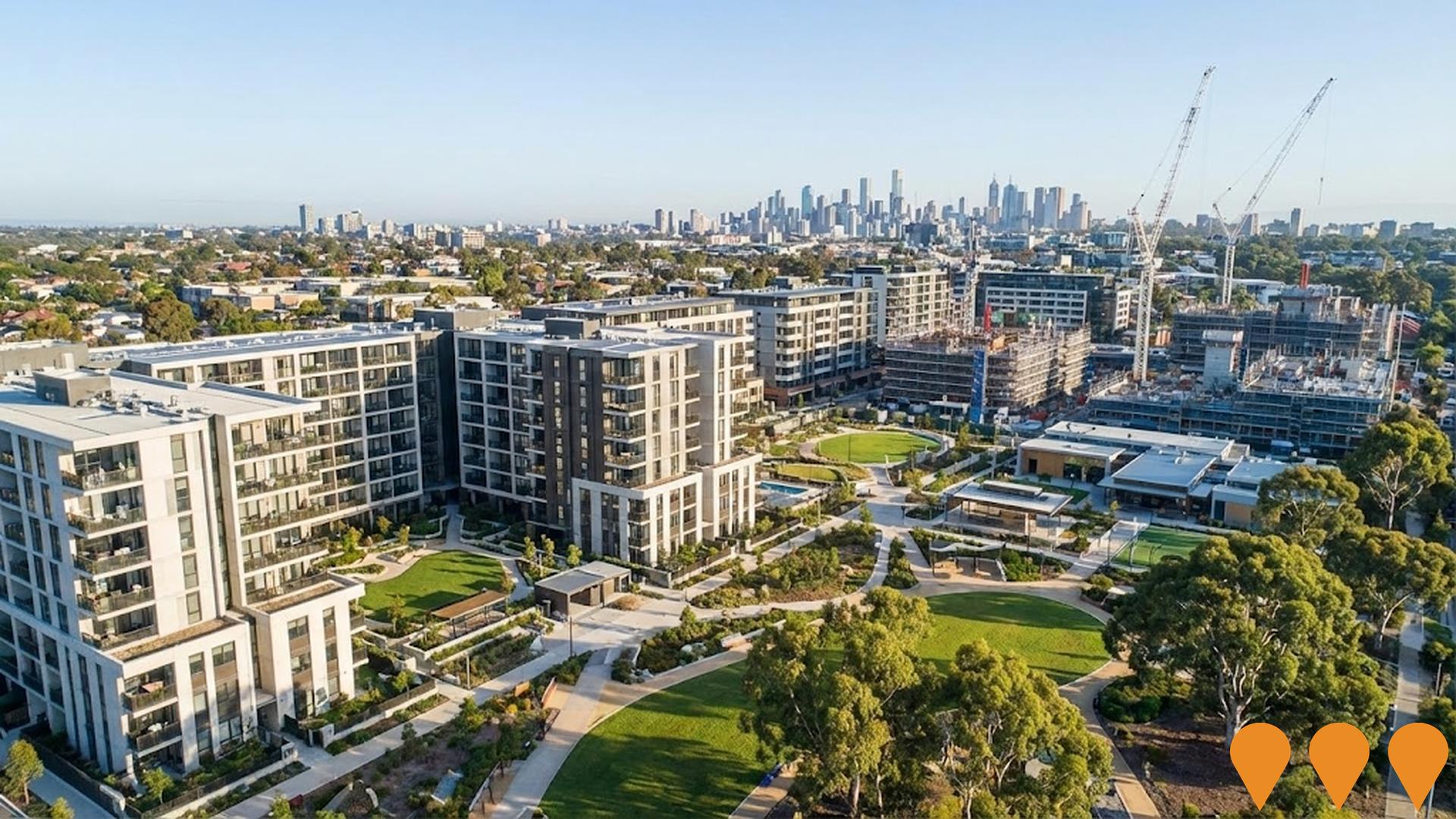
Flemington Housing Precinct Renewal (Various Sites)
A staged, precinct-wide renewal of the Flemington public housing estate, delivered under the Ground Lease Model. The overall precinct renewal includes replacing older public housing with a significant uplift in new, modern, energy-efficient social and affordable rental homes, as well as new community facilities and public parkland. The initial Victoria Street site (part of the overall renewal) has been completed, while the Holland Court site is under construction. Future stages are planned for Racecourse Road and Crown Street sites, replacing the ageing high-rise towers.
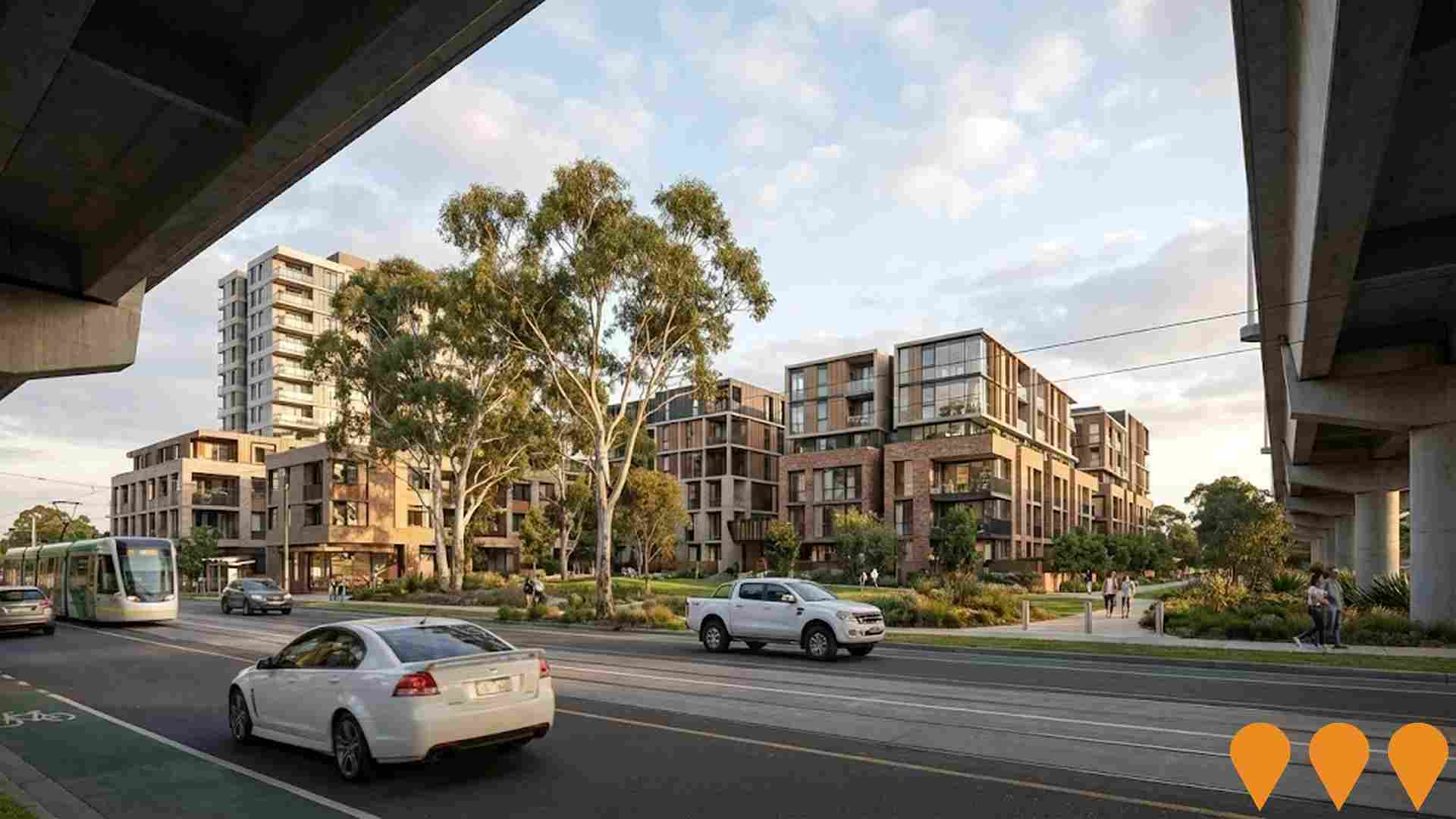
Younghusband Kensington
Melbourne's largest carbon-neutral adaptive reuse precinct, transforming a historic 122-year-old woolstore into 56,000 sqm of A-grade office and retail space. Stage 1 (17,560 sqm) completed mid-2024, featuring heritage preservation with modern sustainability standards including 6-star Green Star rating, 5.5-star NABERS Energy, and full carbon neutrality. The precinct includes a town square, bluestone laneway, railway garden, and activated retail spaces, creating a vibrant community destination in the Macaulay Precinct.
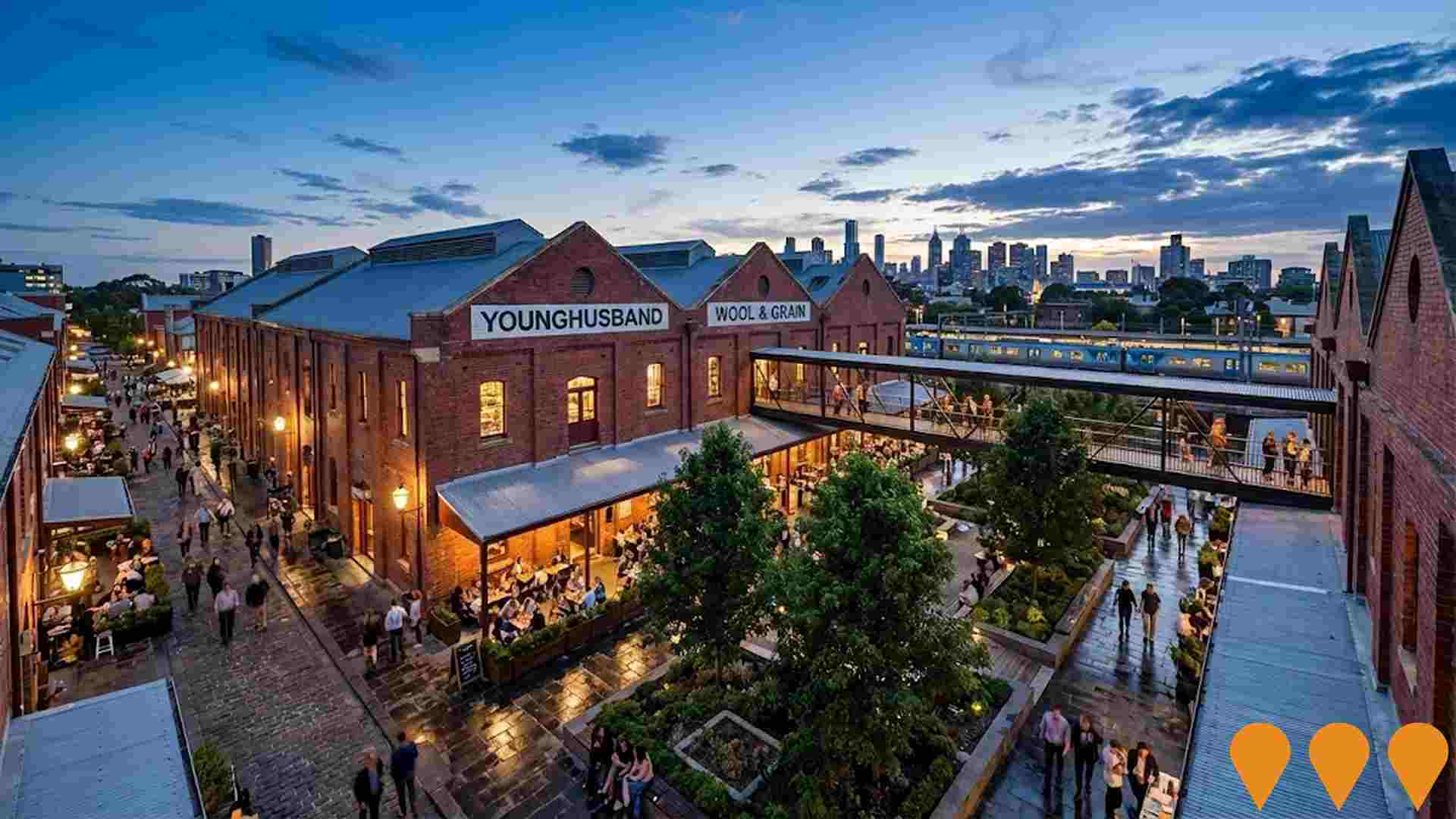
Kensington Community Aquatic and Recreation Centre
A $68.2 million redevelopment of the Kensington Community Aquatic and Recreation Centre in JJ Holland Park, delivering a state-of-the-art facility featuring an indoor 25-metre eight-lane pool, learn-to-swim pool, children's water play area with spouts and fountains, expanded gym with 24-hour access, three full-sized multipurpose courts, health and wellness areas, accessible change rooms including Changing Places facility, community meeting room, seven-day caf‚, and sustainable features such as rooftop solar panels, heat recovery technology, and rainwater harvesting. Officially opened on 29 September 2025 and managed by YMCA Victoria on behalf of the City of Melbourne.
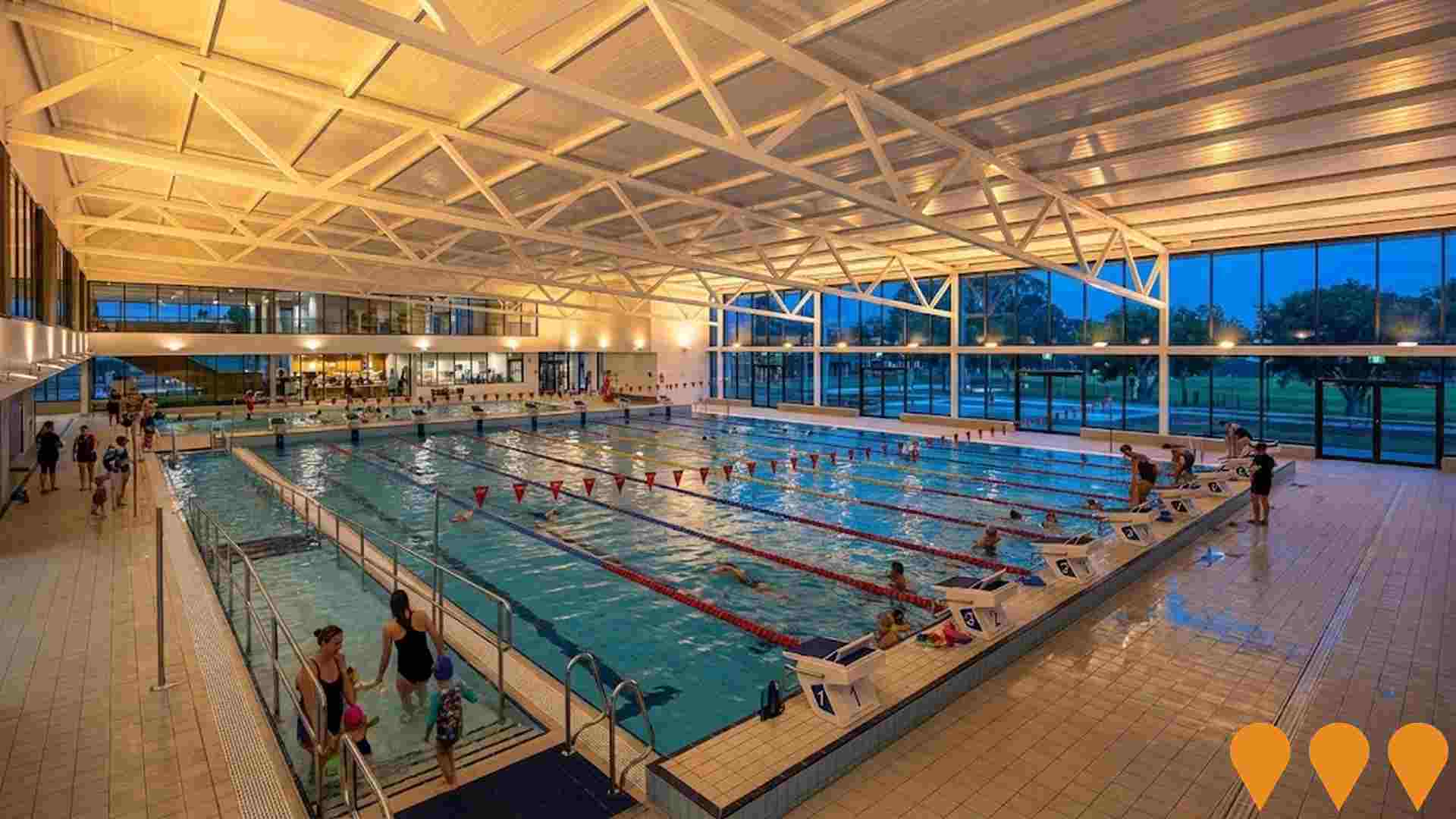
Flemington Green
A landmark mixed-use precinct delivering 460 apartments across three buildings, ground-floor retail and food/beverage tenancies, plus a new public plaza and community facilities as part of the Victorian Government's public housing renewal program.
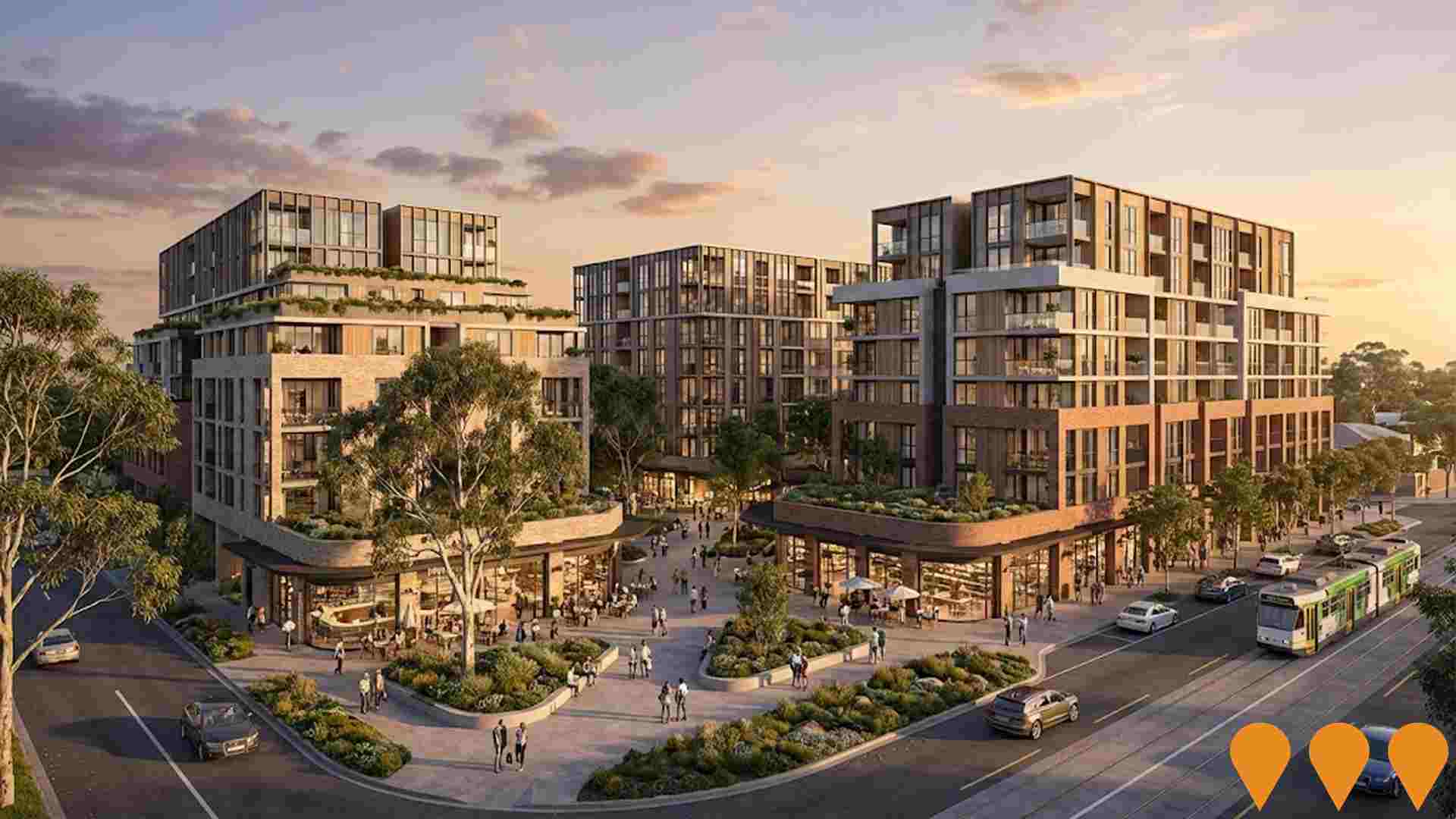
Metro Tunnel - Arden Station
Arden Station is a new underground station in North Melbourne, part of the Metro Tunnel project. It will be at the centre of a new employment and innovation precinct. The station features massive brick arches made from precast concrete and over 100,000 Victorian-made bricks, reflecting North Melbournes industrial history. It includes platform screen doors, three 16m-long skylights for natural light, and is floodproofed with water-sensitive urban design features. Construction of the station is complete, with some surrounding works continuing until the Metro Tunnel opens in 2025.
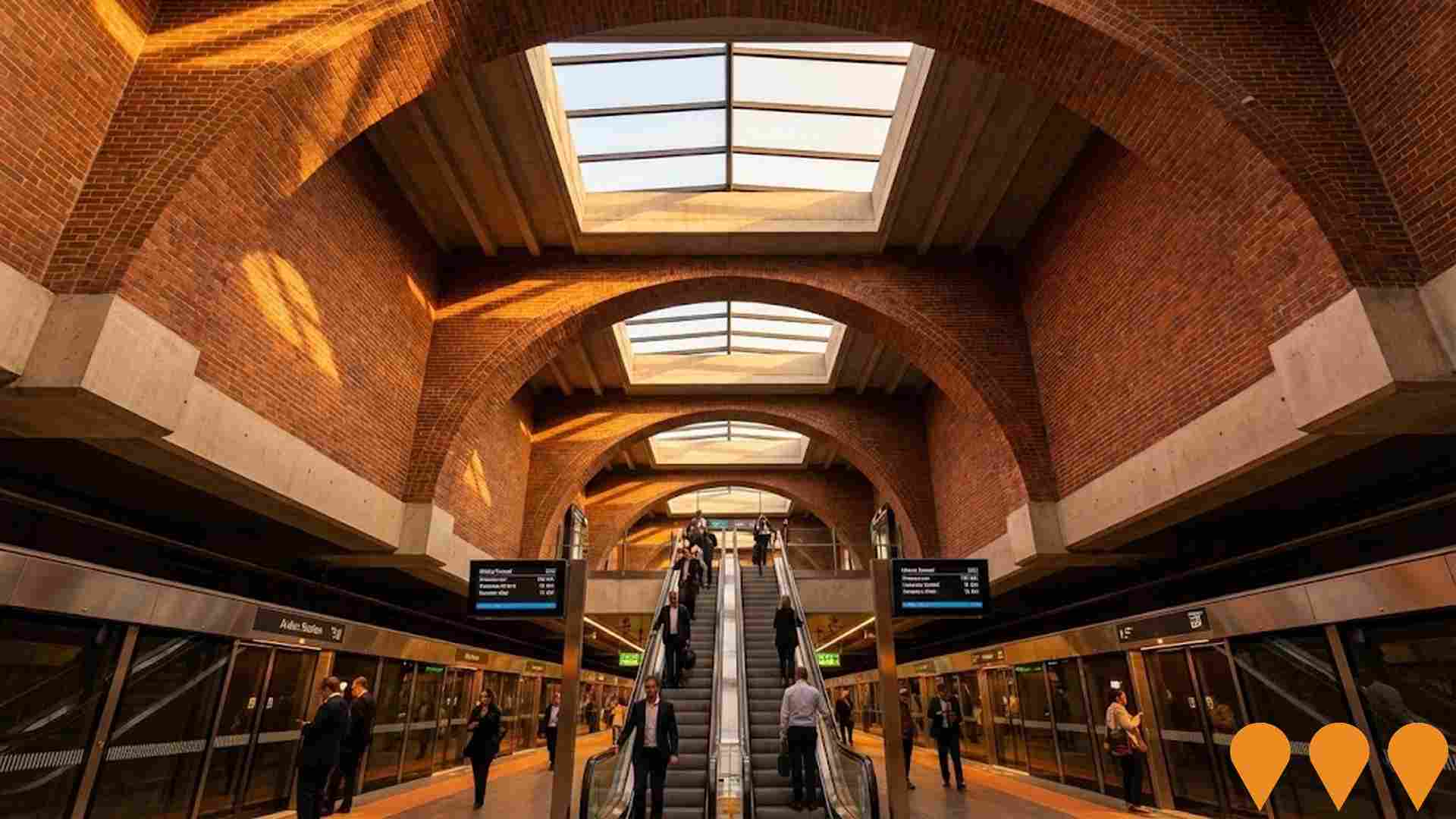
Assemble 402-444 Macaulay Road Build-to-Rent
Major 362-apartment build-to-rent development by Assemble Communities across 5 buildings (4-8 storeys). Designed by Hayball and Kerstin Thompson Architects. Features diverse housing including affordable, social, market-rate and specialist disability accommodation. Built by Hacer Group with $100M+ investment from HESTA.

Holland Court Flemington Housing Development
A $150 million housing development delivering 286 homes including 50 social and 236 affordable rental homes. Features a new public park, 5-star Green Star rating, and 7-star NatHERS average rating. Part of the Victorian Government's investment into social and affordable housing.
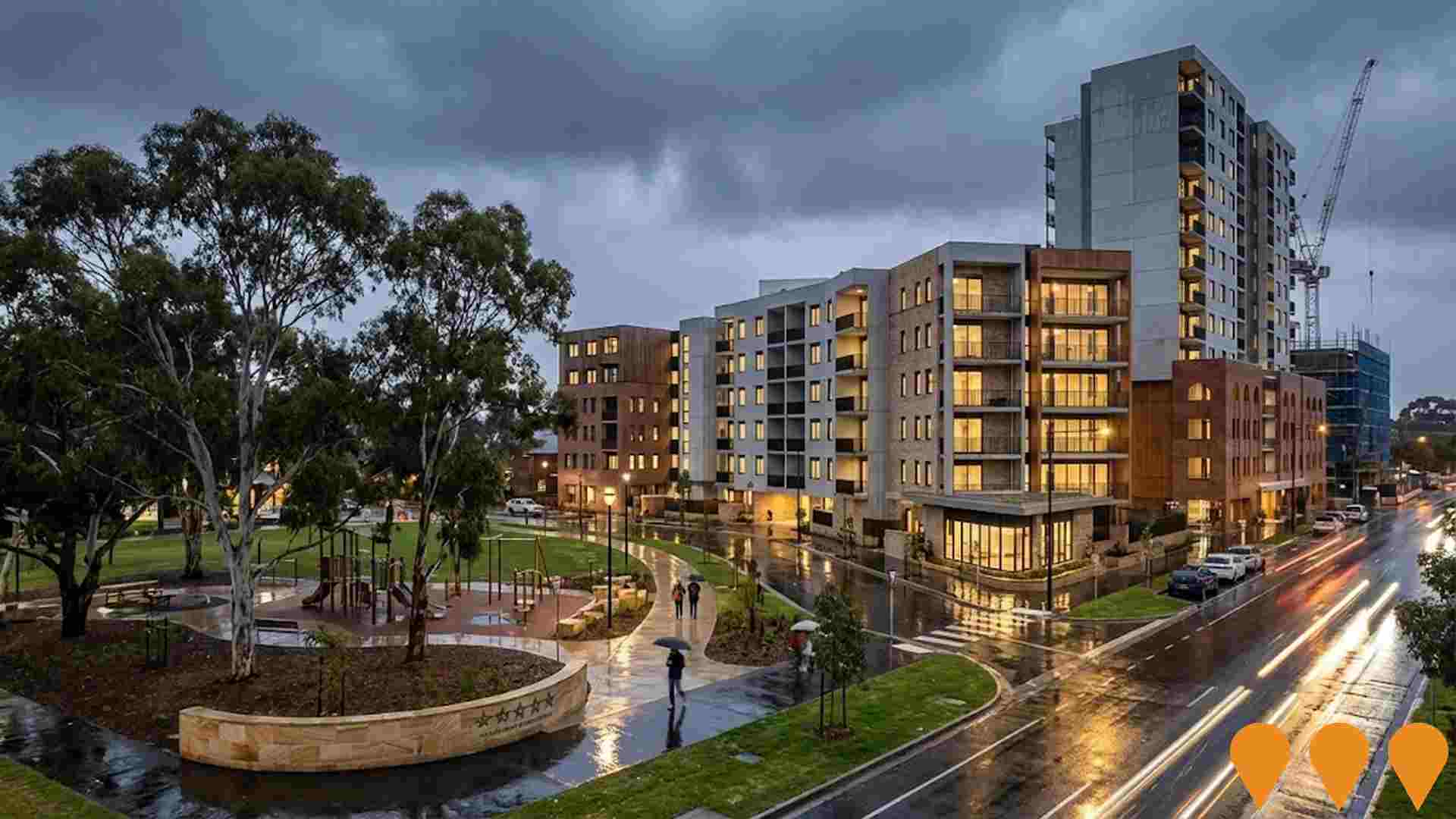
Employment
Kensington has seen below average employment performance when compared to national benchmarks
Kensington Vic features highly educated workforce with professional services strongly represented. Unemployment rate is 6.5%, with estimated employment growth of 6.3% over past year as of June 2025.
Residents in work total 7802, unemployment rate is 1.9% above Greater Melbourne's rate of 4.6%. Workforce participation is high at 74.8%. Key industries are professional & technical (strongly specialized), health care & social assistance, and education & training. Construction employs only 4.3%, below Greater Melbourne's 9.7%.
Many residents commute elsewhere for work based on Census data. From June 2024 to June 2025, employment levels increased by 6.3% and labour force by 7.1%, causing unemployment rise by 0.7 percentage points. Comparing with Greater Melbourne: employment grew by 3.5%, labour force expanded by 4.0%, unemployment rose by 0.5 percentage points. National employment forecasts from Jobs and Skills Australia (May 2025) project growth of 6.6% over five years, 13.7% over ten years. Applying these projections to Kensington's employment mix suggests local growth of approximately 7.3% over five years, 14.7% over ten years.
Frequently Asked Questions - Employment
Income
Income metrics indicate excellent economic conditions, with the area achieving higher performance than 75% of national locations assessed by AreaSearch
AreaSearch's latest postcode level ATO data for financial year ending June 2022 shows median income in Kensington was $64,507 and average income was $81,585. This compares to Greater Melbourne's figures of a median income of $54,892 and an average income of $73,761. Based on Wage Price Index growth of 12.16% from July 2022 to September 2025, estimated current incomes are approximately $72,351 (median) and $91,506 (average). According to the 2021 Census, Kensington's household income ranks at the 84th percentile nationally. Income analysis reveals 31.5% of residents earn between $1,500 and $2,999 weekly, aligning with the surrounding region where this cohort represents 32.8%. High weekly earnings exceeding $3,000 are achieved by 36.0% of households, indicating strong consumer spending power despite high housing costs consuming 16.5% of income. Kensington's SEIFA income ranking places it in the 8th decile nationally.
Frequently Asked Questions - Income
Housing
Kensington displays a diverse mix of dwelling types, with above-average rates of outright home ownership
Kensington's dwelling structures, as per the latest Census, consisted of 17.2% houses and 82.8% other dwellings (semi-detached, apartments, 'other' dwellings). This contrasts with Melbourne metro's figures of 2.2% houses and 97.8% other dwellings. Home ownership in Kensington stood at 18.6%, with mortgaged dwellings at 31.2% and rented ones at 50.2%. The median monthly mortgage repayment was $2,162, exceeding Melbourne metro's average of $1,962. The median weekly rent in Kensington was $416, compared to Melbourne metro's $396. Nationally, Kensington's mortgage repayments were higher than the Australian average of $1,863, and rents were above the national figure of $375.
Frequently Asked Questions - Housing
Household Composition
Kensington features high concentrations of group households and lone person households, with a higher-than-average median household size
Family households constitute 56.3% of all households, including 20.1% couples with children, 27.1% couples without children, and 7.5% single parent families. Non-family households make up the remaining 43.7%, with lone person households at 34.9% and group households comprising 8.8%. The median household size is 2.1 people, larger than the Greater Melbourne average of 1.8.
Frequently Asked Questions - Households
Local Schools & Education
Kensington shows strong educational performance, ranking in the upper quartile nationally when assessed across multiple qualification and achievement indicators
Kensington's residents aged 15+ have a higher proportion of university qualifications than national averages. Specifically, 59.1% hold such qualifications compared to Australia's 30.4% and Victoria's 33.4%. Bachelor degrees are the most common at 35.5%, followed by postgraduate qualifications (18.3%) and graduate diplomas (5.3%). Vocational pathways account for 17.3% of qualifications, with advanced diplomas making up 8.5% and certificates 8.8%.
Educational participation is high in Kensington, with 28.0% currently enrolled in formal education. This includes 10.3% in tertiary education, 6.9% in primary education, and 4.8% pursuing secondary education. The area's four schools combined have an enrollment of 793 students, with above-average socio-educational conditions indicated by an ICSEA score of 1097. Educational provision is split between two primary and two secondary institutions.
Frequently Asked Questions - Education
Schools Detail
Nearby Services & Amenities
Transport
Transport servicing is good compared to other areas nationally based on assessment of service frequency, route connectivity and accessibility
Transport analysis indicates 24 active stops in Kensington offering train, lightrail, and bus services. Five routes serve these stops, facilitating 4,047 weekly passenger trips. Residents enjoy excellent transport accessibility, with an average proximity of 197 meters to the nearest stop.
Daily service frequency averages 578 trips across all routes, translating to about 168 weekly trips per individual stop.
Frequently Asked Questions - Transport
Transport Stops Detail
Health
The level of general health in Kensington is notably higher than the national average with prevalence of common health conditions low among the general population though higher than the nation's average across older, at risk cohorts
Kensington shows better-than-average health outcomes with lower prevalence of common conditions among its general population compared to national averages. However, older and at-risk cohorts have higher rates. Approximately 61% of Kensington's total population (7,221 people) has private health cover, which is higher than Greater Melbourne's 56.0% and the national average of 55.3%.
Mental health issues affect 10.6% of residents, while asthma impacts 8.9%. Overall, 71.7% of residents report no medical ailments, compared to 79.8% in Greater Melbourne. Kensington has 10.6% of residents aged 65 and over (1,263 people), higher than Greater Melbourne's 6.8%. Health outcomes among seniors require more attention than the broader population.
Frequently Asked Questions - Health
Cultural Diversity
Kensington was found to be more culturally diverse than the vast majority of local markets in Australia, upon assessment of a range of language and cultural background related metrics
Kensington's population shows high cultural diversity, with 32.2% born overseas and 25.7% speaking a language other than English at home. Christianity is the predominant religion in Kensington, comprising 29.0%. Buddhism, however, is more prevalent here than across Greater Melbourne, making up 4.4% compared to 7.0%.
For ancestry, the top groups are English (21.6%, higher than the regional average of 16.1%), Australian (18.4%, higher than the regional average of 11.5%), and Other (11.7%, lower than the regional average of 17.1%). Notably, Irish ancestry is overrepresented at 10.9% compared to the regional average of 6.6%. Vietnamese and Chinese ancestries also show minor divergences with regional averages, at 2.3% versus 2.0% and 7.5% versus 19.1%, respectively.
Frequently Asked Questions - Diversity
Age
Kensington's population is younger than the national pattern
Kensington's median age is 35 years, which is slightly younger than Greater Melbourne's 37 and somewhat younger than the national average of 38 years. The 25-34 age group makes up 24.4%, compared to Greater Melbourne's percentage, while the 5-14 cohort is less prevalent at 8.1%. This concentration in the 25-34 age group is well above the national average of 14.5%. Between 2021 and present, the 15 to 24 age group has grown from 10.4% to 11.8% of the population. Conversely, the 45 to 54 cohort has declined from 12.4% to 11.4%. Population forecasts for 2041 indicate substantial demographic changes in Kensington. The 45-54 age cohort is projected to rise substantially by 714 people (53%), from 1,356 to 2,071. Meanwhile, the 15-24 cohort grows by a modest 1% (7 people).
